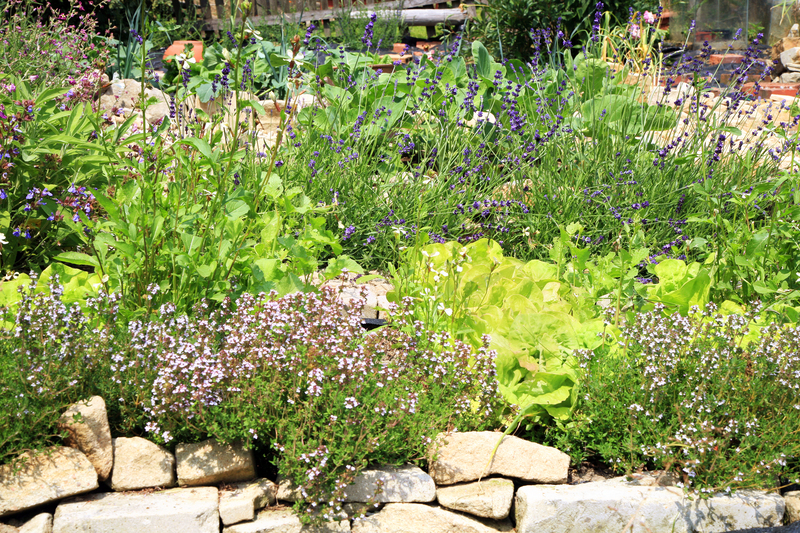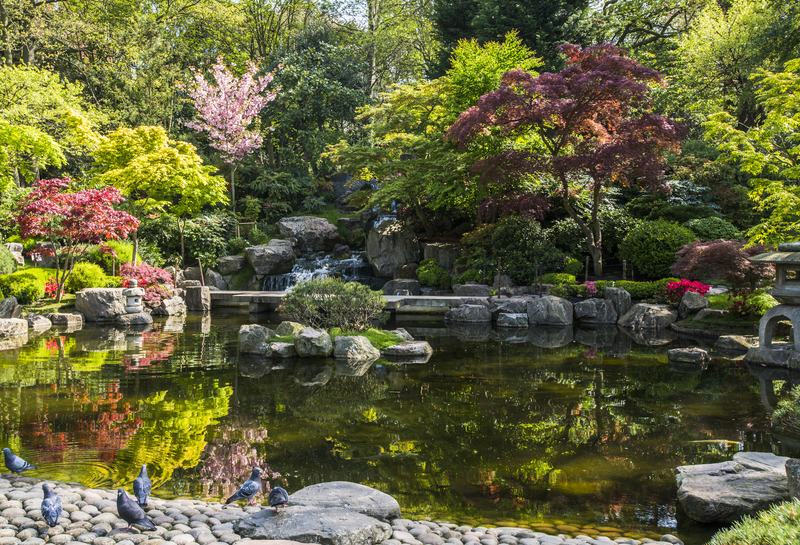Three Ways to Make Your Garden Flexible and Portable
Gardening has always been considered an activity rooted firmly in one place. Traditional gardens involve planting directly into the ground, fostering a sense of permanence. In the modern world, however, gardeners are seeking flexibility and portability in their green spaces. Whether you're renting, living in an apartment, or simply enjoy rearranging your landscape, having a flexible garden that can move and change with you is invaluable.
In this article, we'll explore the top three ways to make your garden flexible and portable. These practical, creative methods will help you nurture plants that can follow you from one home to another or shift seamlessly within your living space. Read on to discover innovative gardening solutions that cater to an ever-changing world.
Why Create a Portable and Flexible Garden?
Portable gardens offer numerous advantages. Not only do they allow you to adapt your green space to various living situations, but they also provide an opportunity to experiment with garden design and plant care with minimal commitment. Here's why a flexible garden could be right for you:
- Ideal for Renters: Easily move your plants if you change homes.
- Urban Solutions: Perfect for balconies or concrete yards with no soil access.
- Seasonal Flexibility: Move plants indoors during harsh weather.
- Creative Freedom: Redecorate or reorganize your garden with ease.
- Accessibility: Position containers for easier reach and care.

Three Innovative Ways to Make Your Garden Portable and Flexible
Here are the three most effective methods for a garden that's as mobile and dynamic as your lifestyle.
1. Embrace Container Gardening
The foundation of any portable garden lies in containers. Container gardening is more than just planting in pots--it's a strategic method for cultivating thriving, movable ecosystems.
Key Benefits of Container Gardening:
- Easy Mobility: Lightweight pots and containers can be shifted outdoors, indoors, or even between homes with minimal effort.
- Customizable: Choose the perfect pot for every plant, tailoring soil, drainage, and aesthetic to each species' needs.
- Seasonal Adaptability: Move tender plants indoors during winter, or relocate sun-lovers throughout the year.
How to Start a Flexible Container Garden
- Select the Right Containers: Opt for pots with proper drainage. Consider lightweight materials like plastic, fiberglass, or resin for larger containers, so they're easier to move.
- Prioritize Plant Choices: Some plants thrive in containers (herbs, vegetables, annual flowers, many shrubs, even dwarf fruit trees). Mix and match for variety and visual appeal.
- Design for Flexibility: Use pot caddies, plant stands on wheels, or lightweight shelving to make rearranging your portable garden a breeze.
- Healthy Soil Mix: Invest in high-quality potting mixes specifically blended for containers. This ensures optimal drainage and nutrient content.
- Smart Watering Solutions: Use self-watering pots or add mulch to slow evaporation, reducing the frequency of watering.
Try grouping containers of different heights and colors for visual impact. With this method, your garden becomes an ever-evolving landscape that can adapt with every season--or any change in your living situation.
2. Utilize Raised Beds with Modular Designs
When you need more growing space than pots allow but still want garden flexibility, modular raised beds offer the perfect solution. These are garden beds constructed above ground, often in frames, with designs specifically created for easy assembly, disassembly, and movement.
Why Modular Raised Beds Are Ideal:
- Portability: Many modular raised beds are built from lightweight materials or panels you can quickly put together and take apart.
- Adjustable Layouts: Move your garden beds into different shapes or areas as your needs (or garden's sun exposure) change.
- Enhanced Soil Quality: Control the soil blend and depth, making it easier to grow a wider range of plants.
- Accessibility: Raised beds are easier to reach, reducing bending and lifting--ideal for gardeners with mobility concerns.
Steps to Set Up a Modular Raised Bed Garden
- Select a Modular Kit: Kits are available in wood, metal, or recycled plastic, often with snap-together or slot-fit systems for tool-free assembly.
- Choose an Ideal Location: Place the beds in sunny spots, then move them if your garden's needs shift (e.g., when seasons change or if you move homes).
- Layer the Soil: Fill beds with a mix of compost, topsoil, and organic matter for robust plant growth.
- Maximize Growth: Interplant vegetables, herbs, and flowers for beauty and productivity.
- Disassemble and Reassemble: If you move, simply empty the beds, break down the panels, and set up your garden at your new location.
Modular raised beds offer the perfect blend of stability and portability. Use them to build healthy soil and robust plants wherever you live, knowing you can reconfigure or relocate your garden anytime.
3. Explore Vertical and Hanging Gardens
Another innovative way to ensure your portable and flexible garden adapts to small or changing spaces is by going vertical. Vertical gardens maximize limited square footage, while hanging gardens create lush green walls and movable displays--indoors or out.
Benefits of Vertical and Hanging Gardens:
- Space Saving: Grow more in less space, ideal for balconies, patios, and urban environments.
- Easy Relocation: Move panels, planters, and hanging baskets to different walls or locations as needed.
- Creative Design: Use unconventional containers, stacked planters, or living walls for a dramatic, modern look.
- Improved Air Quality: Increase greenery, which can help filter urban air both indoors and outdoors.
How to Establish a Vertical or Hanging Garden
- Choose the Right Structure: Options include over-the-railing planters, stackable pots, wooden pallets, vertical fabric pockets, and mounted wall systems.
- Decide What to Grow: Leafy greens (lettuce, spinach), herbs, trailing flowers, succulents, and even strawberries thrive in these systems.
- Flexible Placement: Use lightweight panels or planters so you can detach and move your garden wall or hanging displays as your space or lighting changes.
- Efficient Watering: Install drip irrigation or self-watering inserts to ensure plants at all levels receive enough moisture.
- Hang and Go: Hanging baskets and mounted planters can be hooked on fences, walls, balconies, or even indoors. Relocate with ease whenever you move.
With a vertical or hanging garden, your green space can travel up, across, and even indoors, ensuring ongoing flexibility and portability for your plants.
Additional Garden Portability and Flexibility Tips
Beyond the three primary methods, consider these practical tips for maximizing your garden's versatility:
- Plant Trolleys and Casters: Add wheels under heavy pots and beds for easy movement and rearrangement.
- Folding Greenhouses or Shelters: Portable greenhouses protect plants and can be packed up or moved as needed.
- Temporary Trellises: Use detachable or folding trellises for climbers that you can shift or remove anytime.
- Portable Lighting: Supplement sunlight with movable grow lights to maintain indoor gardens year-round.
- Modular Accessories: Stackable shelves and adjustable plant stands allow for frequent layout changes.
Choosing the Best Portable Garden Option for You
When planning your own flexible, portable garden, consider your space, budget, and intent:
- Small Spaces or Apartments: Opt for vertical systems or container gardens that fit on balconies and windowsills.
- Frequent Movers: Prioritize lightweight pots, modular beds, and hanging displays you can transport easily.
- Larger Yards: Combine modular raised beds with mobile pots, using wheels for the ultimate in moveable design.
Remember to select plants that adapt well to container life and can thrive despite regular movement or indoor-outdoor transitions.
Maintaining Plant Health in a Flexible Garden
One key consideration in any portable garden is how to keep plants healthy through frequent moves or rearrangement. Here are the essentials:
- Gradual Adjustment: When moving plants between light conditions (outdoors to indoors), allow them to adjust gradually to prevent shock.
- Consistent Watering: Container gardens dry out faster--check soil regularly and water consistently.
- Fertilize Prudently: Plants in portable solutions may need more frequent feeding--use slow-release fertilizers or organic compost teas.
- Monitor for Pests: Portable gardens allow for easy inspection; check often and treat problems promptly.
Environmental Impact of Portable Gardens
Portable and flexible gardens can reduce your environmental footprint. By producing food or flowers close to home, you save on transportation and packaging. Reusing modular beds and containers for years also cuts down on waste.
To go greener, choose eco-friendly materials (recycled plastics, sustainable woods), avoid single-use plastics, and compost plant waste as you go.

The Future of Gardening: Adaptability and Mobility
The concept of a portable, flexible garden is rapidly growing as lifestyles shift. Urbanization, climate changes, and the popularity of mobile living (like tiny houses and van life) mean the traditional fixed garden model doesn't always fit modern needs.
By embracing modular, container, and vertical garden systems, gardeners can enjoy the beauty and bounty of plants no matter where they are--or how often their home base changes.
Conclusion: Enjoy Gardening--Anywhere, Anytime
If you crave adaptability, creativity, and freedom in your gardening adventures, the key lies in making your garden portable and flexible. Whether you use stunning container displays, create modular raised beds, or build a breathtaking vertical oasis, these solutions ensure your plants can thrive alongside your life's journey.
Ready to get started? Choose one--or all--of the three ways to make your garden flexible and portable described above and transform your approach to cultivating a green, growing world. With the right strategies, your garden can adapt, move, and flourish wherever life takes you.
- Want more modular garden inspiration? Explore DIY projects, upcycled containers, and innovative vertical garden ideas today!
Happy Gardening--wherever you grow!